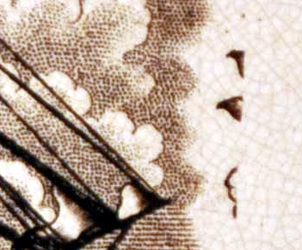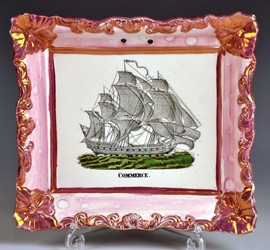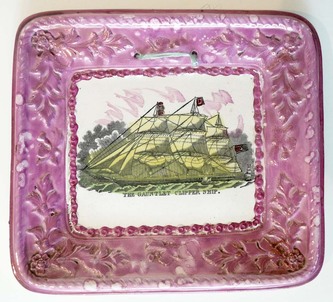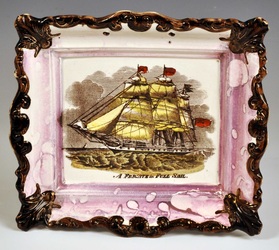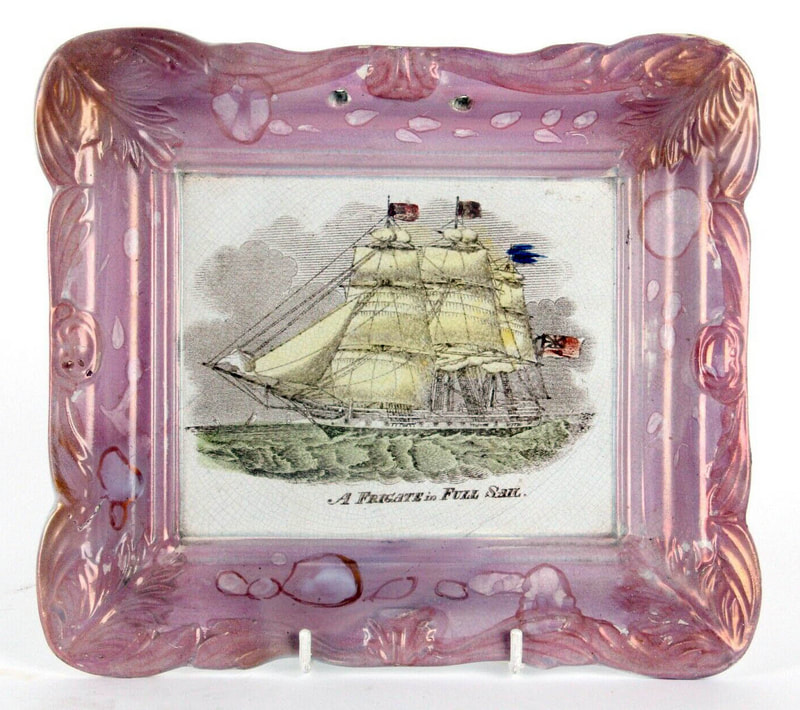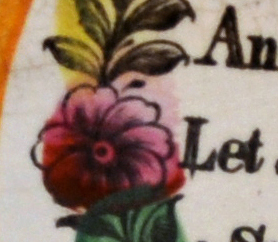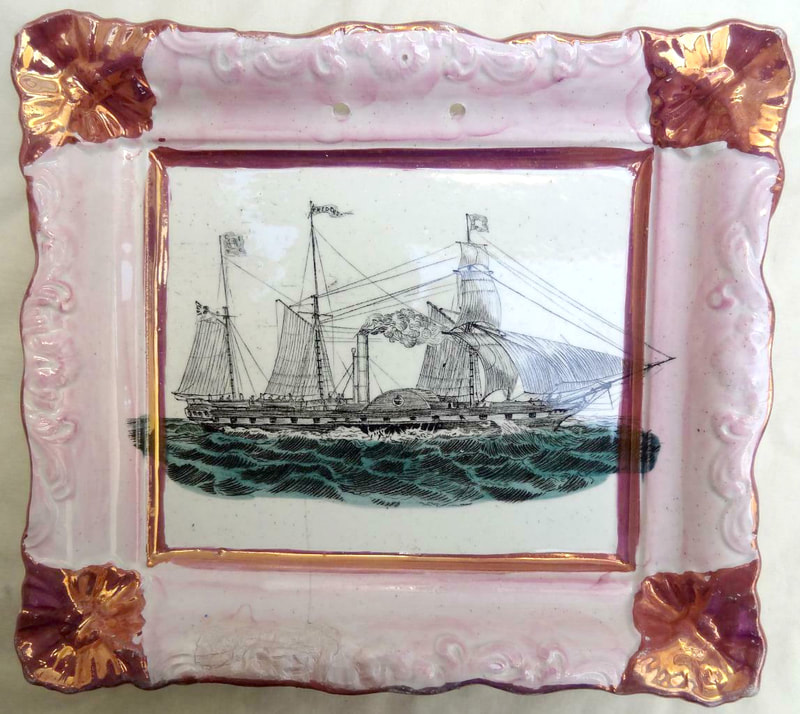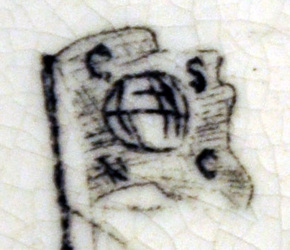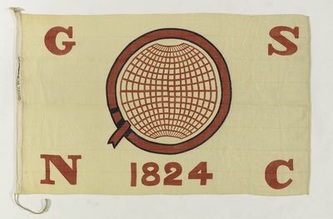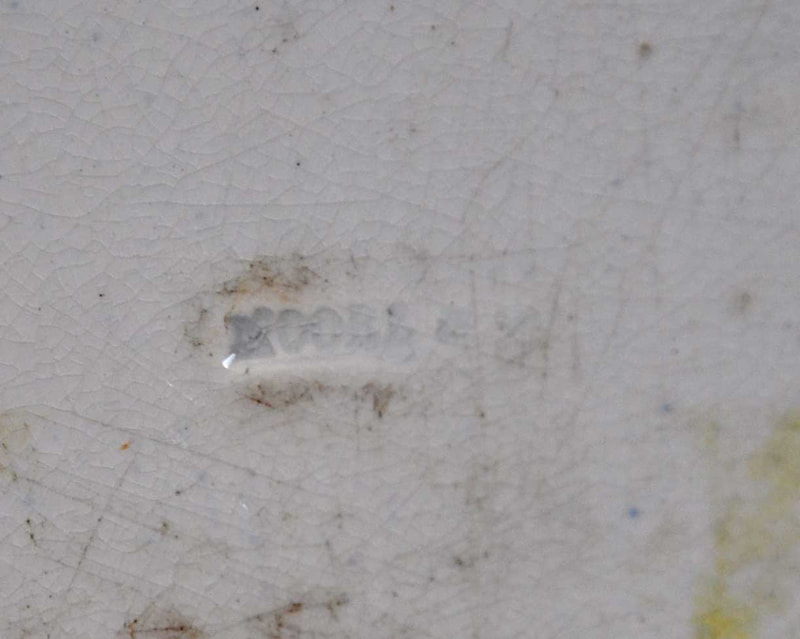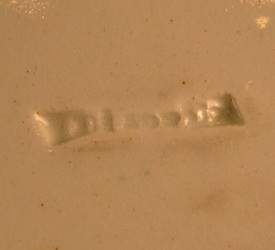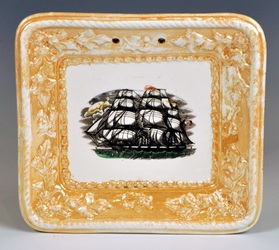Less common ship transfers
For an overview of maritime plaques, click on the Maritime heading above. Click on images to enlarge.
By less common, I meant that I'd seen between 4 and 7 of these transfers in my first 10 years of collecting. I've now seen considerably more. The Moore transfers titled Brig, A Frigate in Full Sail, and Schooner are less common because they are relatively late, so their copper plates were in use for less time. On the other hand, Commerce/Union, the Trident Steamship and untitled ship in a storm, are relatively early, and their copper plates were retired before Moore's period of mass production in the 1860s and 70s.
Brig (Moore, Scott)
Commerce/Union (Moore)
A Frigate in Full Sail (Moore)
Gauntlet Clipper Ship (Garrison, Scott)
Retribution Steamer (Carr)
Schooner (Moore, Scott)
Trident Steam Ship (Moore)
Untitled Ship in a Storm (Moore)
Unidentified ships (Carr, Dixon, Moore, Scott)
Brig (Moore, Scott)
Commerce/Union (Moore)
A Frigate in Full Sail (Moore)
Gauntlet Clipper Ship (Garrison, Scott)
Retribution Steamer (Carr)
Schooner (Moore, Scott)
Trident Steam Ship (Moore)
Untitled Ship in a Storm (Moore)
Unidentified ships (Carr, Dixon, Moore, Scott)
Brig
A brig is a vessel with two square-rigged masts. They were popular in the 18th and early 19th centuries, but fell out of use after the invention of steam power, because they were hard to sail in the wind, and required a large crew relative to their size. Charles Darwin's ship, HMS Beagle (right), was a brig.
http://en.wikipedia.org/wiki/Brig
http://en.wikipedia.org/wiki/HMS_Beagle
The first plaque is attributed to Moore's, and was likely made post 1865 (the transfer appears frequently on orange lustre jugs). This later date might explain why, relative to the common ships, fewer pink-lustre plaques with this transfer exist. Note the fragment of leaves and flowers to the right of the transfer on the plaque (see centre detail). Transfers on plaques were made from portions of larger printing plates with other transfers to be used on bowls, jugs etc. This transfer pairs with that of 'Schooner' below.
See my other site for a comprehensive survey of this transfer on jugs, bowls, rolling pins etc.
http://en.wikipedia.org/wiki/Brig
http://en.wikipedia.org/wiki/HMS_Beagle
The first plaque is attributed to Moore's, and was likely made post 1865 (the transfer appears frequently on orange lustre jugs). This later date might explain why, relative to the common ships, fewer pink-lustre plaques with this transfer exist. Note the fragment of leaves and flowers to the right of the transfer on the plaque (see centre detail). Transfers on plaques were made from portions of larger printing plates with other transfers to be used on bowls, jugs etc. This transfer pairs with that of 'Schooner' below.
See my other site for a comprehensive survey of this transfer on jugs, bowls, rolling pins etc.
Commerce / Union
This transfer of a sailing ship appears with different titles. 'Commerce' and 'Union' appear most often. But 'Resolution', 'Victor', 'Superior' and 'Eclipse' are also known, and I've included these on the rare ships sub-page. Commerce and Union were earlier ships than those usually depicted on plaques, and appear to have been selected for the action adventure appeal of their stories. It is likely that the plaques were made long after the ships were wrecked. Round versions of these plaques are much less common.
Commerce was a Connecticut-based merchant ship, which ran aground off the coast of Africa in 1815. After being attacked by natives, the remaining crew escaped in a rowboat and travelled 300 miles down the coast. When their provisions ran out, they went to shore and were captured by nomads of the Oulad Bou Sbaa tribe. In the 1820s, James Riley, the captain of the Commerce, published their story of dehydration, starvation, and brutal treatment as captives ('Authentic Narrative of the Loss of the American Brig Commerce'). In 2004, the story was retold by Dean King in his bestseller 'Skeletons of the Zahara'.
http://en.wikipedia.org/wiki/Commerce_(ship)
Union was a snow (pronounced snoo), ie a merchant brig that saw military service too. In 1804, on the way from Sydney to China, the ship stopped in the Friendly Islands in search of sandalwood. The eight men who went ashore were slaughtered by the natives. The natives then approached the Union in a canoe, with a captive woman, Elizabeth Morely, to entice more men off the ship. But Morely screamed, leapt out of the canoe and swam to the ship, while the crew held off the natives. She turned out to be the remaining survivor from the wreck of the Duke of Portland. The ship sailed back to Sydney. In November 1804, the Union sailed for Fiji, but was completely wrecked near Sandalwood Bay. The crew who didn't drown were killed by natives.
http://en.wikipedia.org/wiki/Union_(ship)
Commerce was a Connecticut-based merchant ship, which ran aground off the coast of Africa in 1815. After being attacked by natives, the remaining crew escaped in a rowboat and travelled 300 miles down the coast. When their provisions ran out, they went to shore and were captured by nomads of the Oulad Bou Sbaa tribe. In the 1820s, James Riley, the captain of the Commerce, published their story of dehydration, starvation, and brutal treatment as captives ('Authentic Narrative of the Loss of the American Brig Commerce'). In 2004, the story was retold by Dean King in his bestseller 'Skeletons of the Zahara'.
http://en.wikipedia.org/wiki/Commerce_(ship)
Union was a snow (pronounced snoo), ie a merchant brig that saw military service too. In 1804, on the way from Sydney to China, the ship stopped in the Friendly Islands in search of sandalwood. The eight men who went ashore were slaughtered by the natives. The natives then approached the Union in a canoe, with a captive woman, Elizabeth Morely, to entice more men off the ship. But Morely screamed, leapt out of the canoe and swam to the ship, while the crew held off the natives. She turned out to be the remaining survivor from the wreck of the Duke of Portland. The ship sailed back to Sydney. In November 1804, the Union sailed for Fiji, but was completely wrecked near Sandalwood Bay. The crew who didn't drown were killed by natives.
http://en.wikipedia.org/wiki/Union_(ship)
Gauntlet Clipper Ship
The top centre image shows the source for the transfer from the Illustrated London News, April 27, 1853. The text below comes from the Angell Family Website:
'A number of extremely sharp clippers were constructed entirely of iron for the Australian trade, after gold was found there in 1851; some of those ships later participated in the tea trade, but they were always regarded with suspicion as it was claimed that the tea was damaged in their holds through lack of adequate ventilation. Two such ships, built in 1853, were the Gauntlet and Lord of the Isles from shipyards on the River Clyde. An engraving of the former published in the Illustrated London News described her as 'the most perfect clipper ship ever launched on the Clyde, and she appears more like a yacht of large tonnage than a private merchant ship.'
'A number of extremely sharp clippers were constructed entirely of iron for the Australian trade, after gold was found there in 1851; some of those ships later participated in the tea trade, but they were always regarded with suspicion as it was claimed that the tea was damaged in their holds through lack of adequate ventilation. Two such ships, built in 1853, were the Gauntlet and Lord of the Isles from shipyards on the River Clyde. An engraving of the former published in the Illustrated London News described her as 'the most perfect clipper ship ever launched on the Clyde, and she appears more like a yacht of large tonnage than a private merchant ship.'
A Frigate in Full Sail
The term 'frigate' applies to several classes of warship built for speed and manoeuvrability. They had no guns on their lower decks, but usually had additional mounted guns on their forecastles and quarter decks. Frigates could carry up to 6 months' stores, and therefore had a long range. They were used for reconnaissance, carrying messages and dignitaries, and engaged in battles with other frigates.
Read more here: http://en.wikipedia.org/wiki/Frigate
The transfer is attributed to Moore's, and appears on a bowl with the Moore impress, and a hand-painted date, 1859. The third plaque above is on a plaque form associated with Carr's North Shields Pottery. So it looks as if the transfer plate was sold on at some point.
See my other site for a comprehensive survey of this transfer on jugs, bowls etc.
Read more here: http://en.wikipedia.org/wiki/Frigate
The transfer is attributed to Moore's, and appears on a bowl with the Moore impress, and a hand-painted date, 1859. The third plaque above is on a plaque form associated with Carr's North Shields Pottery. So it looks as if the transfer plate was sold on at some point.
See my other site for a comprehensive survey of this transfer on jugs, bowls etc.
Retribution Steamer
HMS Retribution was a wooden-hulled, 10-gun, paddle frigate launched on July 2nd, 1844. The ship won battle honours in the Crimea 1854, Baltic 1855, and China 1860. She was sold on July 15th, 1864 for breaking up.
http://www.pdavis.nl/ShowShip.php?id=1982
The plaques above are all attributed to John Carr's Low Lights Pottery, North Shields. The first, smaller, plaque form likely dates from, c1855. The others are later, c1860s.
http://www.pdavis.nl/ShowShip.php?id=1982
The plaques above are all attributed to John Carr's Low Lights Pottery, North Shields. The first, smaller, plaque form likely dates from, c1855. The others are later, c1860s.
Schooner
A schooner is characterised by fore-and-aft sails on two or more masts. The yacht America – namesake of The America's Cup – was a schooner. This plaque pairs with 'Brig' above, and also shows traces of flowers to the right of the transfer (top centre detail). They are clipped from the verse 'When far at sea remember me' (top right detail) which would have been beside the Schooner transfer on the copper transfer plate.
http://en.wikipedia.org/wiki/Schooner
See my other site for a comprehensive survey of this transfer on jugs, bowls, rolling pins etc.
http://en.wikipedia.org/wiki/Schooner
See my other site for a comprehensive survey of this transfer on jugs, bowls, rolling pins etc.
Trident Steam-Ship
The bottom centre is a detail from a print in the National Maritime Museum collection, titled: 'The arrival of Her Majesty, ...Prince Albert, and Suite at Woolwich, on board the General Steam Navigation Company's Ship 'Trident' ...on the return of the Royal Visit from Scotland... 1842'.
http://collections.nmm.ac.uk/collections/objects/148852.html
The flags on the transfer confirm the ship on the plaque to be one and the same. The left flag has the initials G.S.N.C. for General Steam Navigation Company. (The centre image is again from the National Maritime Museum collection.) The flag on the centre mast has the ship's name 'Trident'.
Untitled Ship in a Storm
This transfer, which appears on 'Moore & Co' impressed items, shows a ship in stormy waters. Similar, yet more dramatic, depictions exist of the Atlantic cable-laying ship, Agamemnon (see Rare ships) in a storm. The transfer on the first plaque has been applied at an angle, to correct the lilt of the ship!
There is a hard-to-read signature engraved between the waves, most likely Ebenezer Poulson, a marine artist working in Sunderland. See the lighthouses section of the Rare ships page for more information.
There is a hard-to-read signature engraved between the waves, most likely Ebenezer Poulson, a marine artist working in Sunderland. See the lighthouses section of the Rare ships page for more information.
Unidentified ship
The first and third plaques above with the impressed mark 'Dixon Co'. It is rarer to find examples with coloured enamels.
Orange lustre plaques with untitled ships
The plaques with rounded corners (top row) attributed to Scott of Southwick. The bottom left plaque, with the 'MOORE & Co' impress, and the impressed letter 'M'. The other plaque is attributed to Moore & Co.
See my other site for a comprehensive survey of these ship transfers on jugs, bowls, etc.
See my other site for a comprehensive survey of these ship transfers on jugs, bowls, etc.

